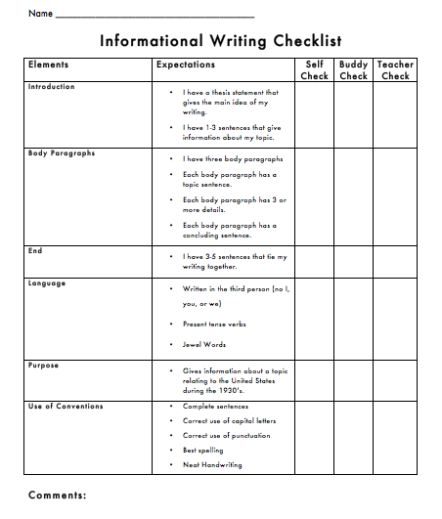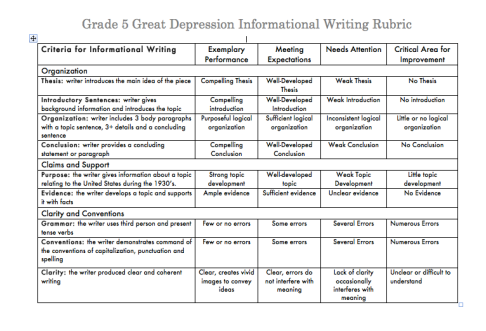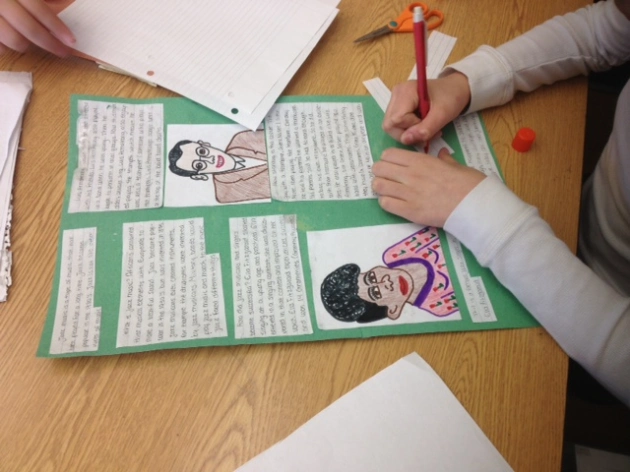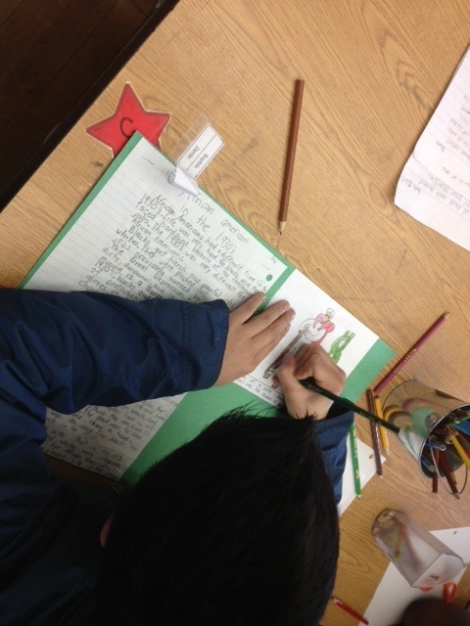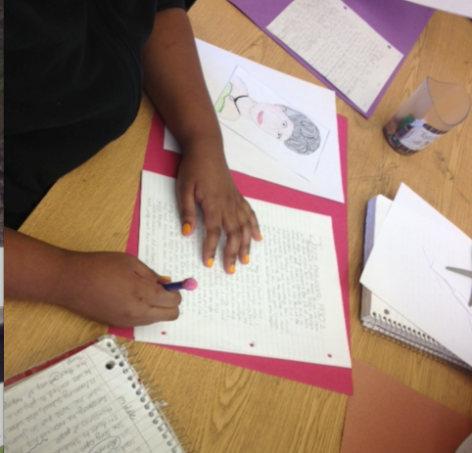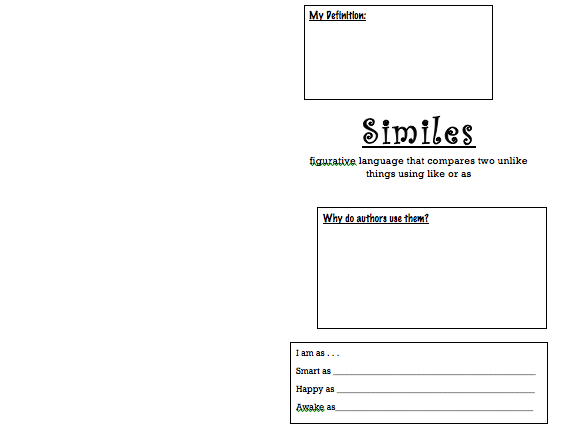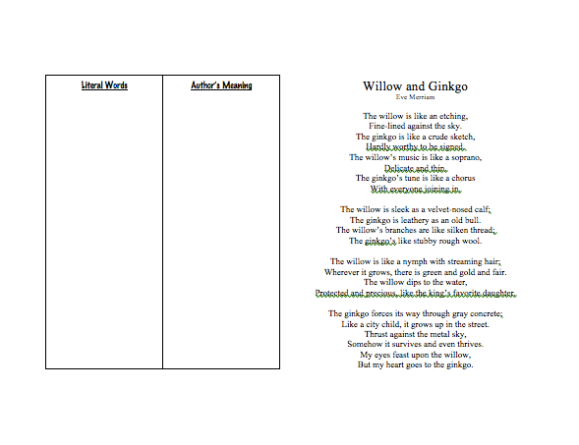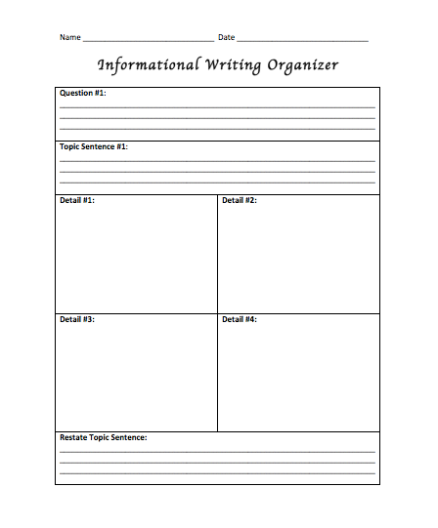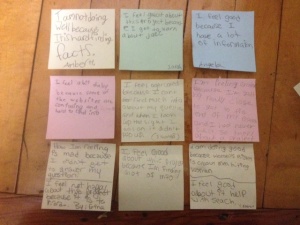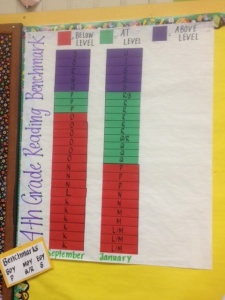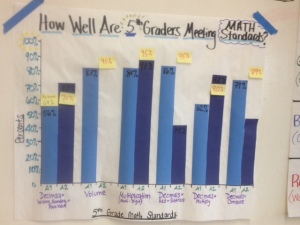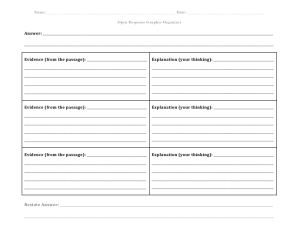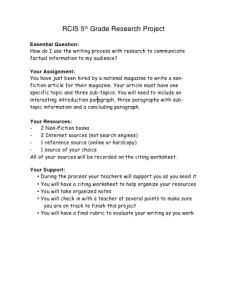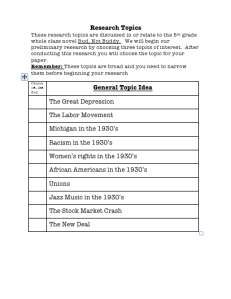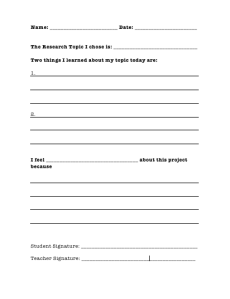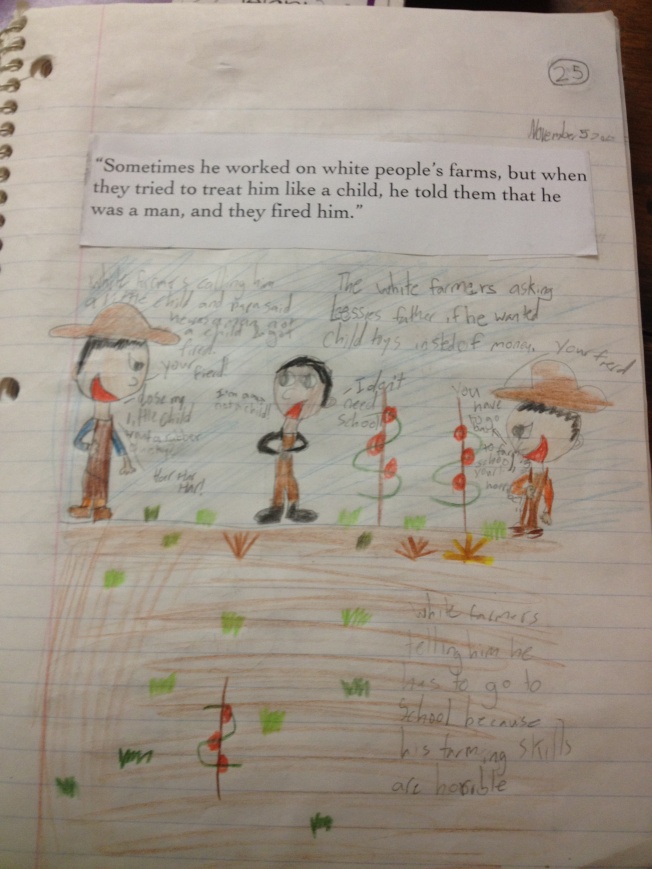As students progressed through the writing processes of revising, editing, peer editing, and teacher conference we wanted to make sure that they were keeping all of the mini-lessons and expectations that they have been exposed to throughout the unit in mind. I created the following checklist so that individual students, their peer editors and teachers would know what to look for when reviewing students’ work.
We found that this checklist was incredibly helpful for a variety of reasons. It allowed students to check their own work before proceeding to a peer conference. Secondly, it enabled students and their peers to have a quality conversation during peer editing. Students were able to give their partners specific feedback around the items that they needed to work on as well as the parts of their work that were going well. Finally, the checklist is directly connected to the following rubric that we will use to score student work.
The criteria for the rubric were taken directly from the checklist so there are no surprises for students and grading is consistent for teachers. Each category is weighted differently for a total score point out of 100.
